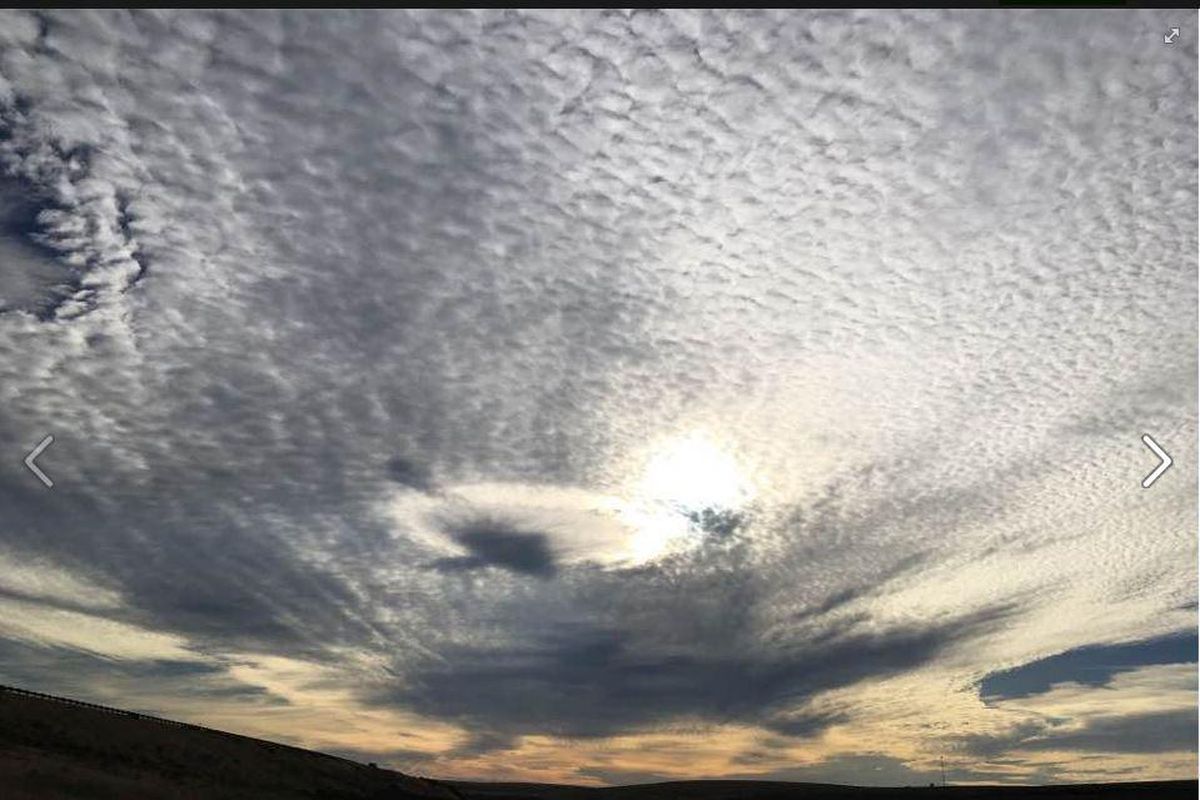Weathercatch: What punched holes in our clouds?

The cloudscape threw us a curveball on June 20 when donut-shaped clouds wafted over the Inland Northwest. The unusual display prompted citizen observers to snap photographs and the Spokane office of the National Weather Service to post an explanation with satellite images on social media.
What people witnessed that morning were cavums, or “hole punch clouds” until the World Meteorological Organization officially recognized them with a Latin name less than four months ago.
Cavums are distinguished by circular – and sometimes cigar-shaped – gaps within waferlike cloud layers. And though we’re still learning about the exact atmospheric conditions that shape them, recent studies conclude that aircraft are largely responsible.
Picture a low-altitude jet flying through a thin cloud layer made of super-cooled water molecules. This disturbance causes the water droplets to freeze into ice crystals that fall from the sky like snow, leaving a void in the thin cloud blanket.
In a 2010 study led by Andrew Heymsfield of the National Center for Atmospheric Research, scientists found that commercial and private aircraft, military jets and turbo props all produce holes in certain types of clouds. What’s more, the size of the opening grows for hours.
If a plane climbs through the cloud layer, a hole is punched. If it flies more level to the cloud, an oblong, cigar shape is formed, researchers observed.
For several hours in June, wispy clouds over the Inland Northwest were pocketed with holes and cigar shapes. Most likely, cirrocumulus and altocumulus clouds were abundant that morning, setting up the right conditions for cavums to form along paths of low-altitude aircraft.
Nic Loyd is a meteorologist with Washington State University’s AgWeatherNet. Linda Weiford is a WSU news writer and weather geek. Contact: linda.weiford@wsu.edu or nicholas.loyd@wsu.edu.